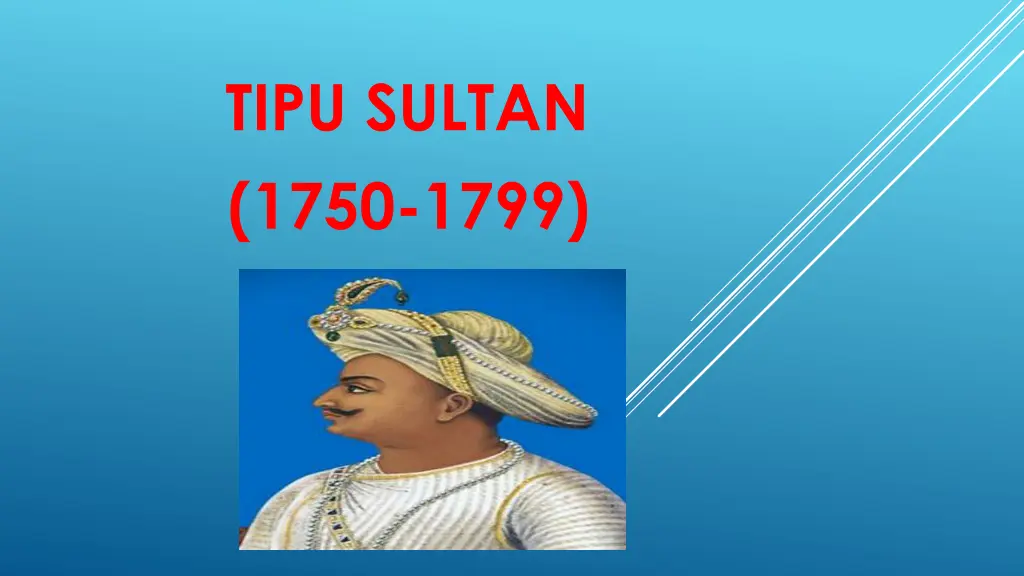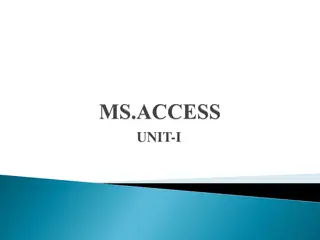
Tipu Sultan and the Anglo-Mysore Wars: History and Legacy
Discover the historical timeline of Tipu Sultan and the Anglo-Mysore Wars, from the rise of Haider Ali to the treaties and battles that shaped the region. Learn about the conflicts, alliances, and ultimate impact on Mysore's governance post-Tipu Sultan era.
Download Presentation

Please find below an Image/Link to download the presentation.
The content on the website is provided AS IS for your information and personal use only. It may not be sold, licensed, or shared on other websites without obtaining consent from the author. If you encounter any issues during the download, it is possible that the publisher has removed the file from their server.
You are allowed to download the files provided on this website for personal or commercial use, subject to the condition that they are used lawfully. All files are the property of their respective owners.
The content on the website is provided AS IS for your information and personal use only. It may not be sold, licensed, or shared on other websites without obtaining consent from the author.
E N D
Presentation Transcript
TIPU SULTAN (1750-1799)
After the decline of Kingdom of Vijaynagra, many small kingdom under the Wodeyars emerged in the region of Mysore (Around 1565) Hindu ruler Chikka Krishnaraja Wodeyar II ruled from 1734 to 1766 Rise of Haider Ali Born in 1721, started his career as a horseman in the Mysore army under Wodeyar rulers. He became the ruler of Mysore in 1761. Incursion of Marathas and Nizam s troops troubled him.
Recovering from their defeat in the third battle of Panipat, the Marathas under Madhavrao attacked Mysore and defeated Haider Ali in 1764, 1766 and 1771. To buy peace Haider Ali had to give them large sums of money After Madhav Rao s death in 1772, Haider Ali raided Maratha territories which he had previously lost.
First Anglo- Mysore War (1767-1769) After their easy success in Bengal, The English wanted to do the same in the rest of the country as they were aware of the lack of unity among the Indian rulers. The British signed a treaty with the Nizam of Hyderabad to give the the Northern Circars in lieu of which they would protect him from any attack from Haider Ali. The Nizam, the Marathas and the British allied together Against Haider Ali. Haider Ali persuaded them to remain neutral in this war. The English had to sign a very humiliating treaty with Haidar. Treaty of Madras on 4thApril 1769
Second Anglo- Mysore War (1780-1784) Breach of treaty of Madras, didn t come for help when the Marathas attacked. The British were not happy with Haider Ali s friendship with the French Haider forged an anti-English alliance with the Marathas and the Nizam. Defeated the British army under colonel Baillie in 1781. The English under sir Eyre Coote detached both Marathas and the Nizam from Haider s side. Still he defeated the English and captured their commander Braithwaite. Haider died of cancer in 1782, Tipu Sultan signed the treaty of Mangalore with the British.
Third Anglo- Mysore War Tipu s two son were taken as hostages by the English. Treaty of Seringpatam Fourth Anglo- Mysore War (1798-1799) 1798- Lord Wellesley became the new governor general of India. He was an imperialist to the core. He was concerned with the growing friendship of Tipu with the French. Tipu fought bravely against the British and died in the fourth Anglo-Mysore war. After Tipu s death, the English chose a boy from the earlier Hindu royal family of Mysore as the Maharaja and imposed on him the subsidiary alliance.
He was known as the tiger of Mysore. He organized his army on the western model with Persian words of command. He was patron of science and technology. Pioneer of rocket technology in India. Great lover of democracy and a great diplomat. He planted the tree of liberty at Seringpatan. Some historians have depicted Tipu as a bigoted monarch.






















